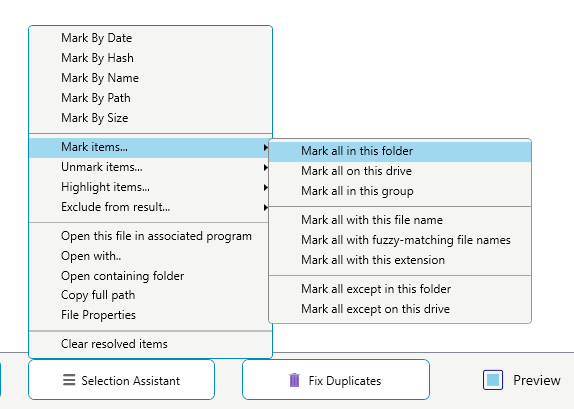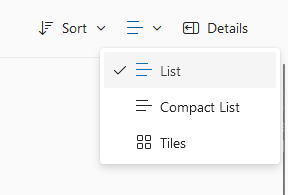What is Microsoft OneDrive?
Microsoft OneDrive is a cloud storage, sync, and collaboration platform from the techno-giant. It offers a simple and powerful Web-based interface to upload user’s documents and files, sync them with other devices, and share them with business colleagues. Additionally, it offers a stand-alone cloud synchronization application that makes it easier to automatically sync user’s files onto the cloud with little to no user intervention.
What are the Benefits of Storing Files on OneDrive?
There are numerous benefits of storing your files on OneDrive. Here are some key benefits:
- Storage Benefit: An important benefit of storing files on OneDrive is it instantly frees up your storage. If you’re running out of storage, it can instantly make room to store new files and help improve your PC’s performance.
- Accessibility: A major benefit of storing files on OneDrive is that they are easily accessible from anywhere, regardless of the device and location. You can access your files from your home, office, or anywhere with just an Internet connection.
- Real-time File Transfer: Do you want to transfer a bunch of files from your PC to a mobile or tablet? It’s easy! With OneDrive, you don’t need to connect any USB stick, or data cable or manually email files. Just sync your devices with your OneDrive account and you’re ready to go.
- File Security: Storing files on OneDrive is more secure than storing them on your physical hard disk. Your hard disk may become corrupt, leaving you with unprecedented data loss. However, any files stored on OneDrive will remain protected.
- Free Plan: OneDrive offers a free plan with a limited storage quota of 5 GB. If you’re a home user with fewer documents, photos, and videos to store, it may be sufficient. As you store more files, you can upgrade for additional storage capabilities.
How Do I Accumulate Duplicates in OneDrive?
Much like any other cloud service OneDrive suffers from the problem of duplication. When you have the same versions of your documents on your PC, laptop, tablet, or mobile – all linked to a single OneDrive account, there’s a good chance that you will acquire a lot of duplicates in your OneDrive account.
Another reason behind duplication is sync conflicts. Occasionally, OneDrive may suffer technical glitches while syncing the changes made by multiple people editing the same file. When such a situation arises, OneDrive can create a duplicate version of your file with additional prefixes or suffixes (depending on its program settings). The idea is to prevent potential data loss.
Moreover, manual user actions such as uploading the same files multiple times can further contribute to the mess. It’s easy to upload files without realizing they were already uploaded in another folder a few days back.
OneDrive Duplicate Finder
OneDrive Duplicate Finder is a robust tool that enables users to find duplicate documents, photos, videos, and music from OneDrive, get a comprehensive report, and delete, move, rename, or replace them. It identifies duplicate documents by generating a hash of your file’s content and comparing it against the hashes generated from other files. Since it takes the file content as the comparison metric and not the file name, the results are mostly accurate.
OneDrive Duplicate Finder Features
Here are the prominent features of OneDrive Duplicate Finder software:
- Fast & accurate scan using smart algorithms that compare the contents of your files, rather than just names
- Multiple file marking/ un-marking patterns to choose from
- Built-in File Preview feature provides you a preview of images and music files so that you don’t have to open them
- Provides an intuitive pie chart classifying your duplicates into different file types
- Provides a comprehensive report of directories containing the most and least duplicate files
- Ability to export your Duplicates List, and Folder-wise Report to a file
- Save & load Scan Profile (Search Folders List, Ignore Folders List, File Types, and File Size)
- Automatically save the current session to get started from where you left the next time you open the application
- The File History feature shows a comprehensive report of past duplicate scans and actions taken
- Add-on utilities: Folder Compare and File Organizer
How to Automatically Find Duplicate Files in OneDrive?
The easiest way to find duplicates in OneDrive is to use a duplicate finder software. It’s fast, easy, and comes with powerful features.
Step 1: Install and Configure OneDrive Application
- If you’re using Windows 10 or Windows 11, OneDrive is pre-installed. If it isn’t, download OneDrive from Microsoft and install it.
- Click on the OneDrive icon in the system tray area of your Taskbar.
- Click on Sign in.
- Enter your OneDrive sign-in credentials, and then click on Next.
- Keep the default OneDrive folder location (C:\Users\UserName\OneDrive), and then click on Next.
- On the subsequent page, click on Next.
- Follow the on-screen instructions.
Step 2: Scan OneDrive for Duplicates
1. Download DupInOut Duplicate Finder.
2. Click on the New Search tab.
3. Click on the Add button, and select your OneDrive folder (C:\Users\UserName\OneDrive).

4. Click on Start Search.
5. Once the scan finishes, click on Review & Fix.
6. Click on the Selection Assistant button, and choose one of the options to mark duplicates by your desired pattern. You may also manually mark/ un-mark duplicates.

7. Click on Fix Duplicates, and choose whether you want to delete, move, rename, or replace the duplicates.
That’s it, finding duplicate OneDrive files has never been that easy.
How to Manually Find Duplicates in OneDrive?
If you have fewer files in your OneDrive account, it makes sense to find them manually. With manual the method, you won’t have to download a separate tool or spend time learning how to use it. Deduping your drive can not only free up your storage but also fix OneDrive sync issues and errors.
1. Sign in to your OneDrive account.
2. Click on the My Files tab.
3. Click on the Switch View Options icon in the upper right corner of your screen. (This icon is located right next to the Sort icon)
4. Select List.

5. Click on the Sort icon.
6. Select Name.

7. Click on the Sort icon again.
8. Select Ascending.
9. OneDrive will sort your files by their names in ascending order. It will help you identify original and duplicate versions.
Human errors are inevitable. Thus, it’s recommended to move duplicates to a separate folder rather than deleting them straightforwardly. Moving them to a separate folder will enable you to review them, and get back any files should you accidentally flag them as duplicates.
How to Prevent Duplicate OneDrive Files in Future?
Duplicate files can occur due to multiple reasons. As such, it is not possible to entirely prevent duplication in the future. However, there are several ways to reduce their accumulation.
Choose How OneDrive Responds to Sync Conflicts
OneDrive provides you with a way to change how it responds to sync conflicts.
- Click on the OneDrive app icon in the system tray area of your Taskbar.
- Click on the Settings icon on the upper right.
- Select Settings.
- Click on the Office tab.
- In the Sync Conflict section, choose “Let me choose to merge changes or keep both copies”.
- Click on OK.
Keep a Simple Folder Structure
Reorganize your files in a simple, clean, and understandable folder structure. It will help you not only locate your digital assets quickly when you need them but also lower the amount of duplication caused by neglect and forgetfulness.
- Hierarchically store your files with parent folders and sub-folders
- Classify your data into different categories (such as family photos, work files, customer invoices), and create separate sub-folders for each major category
- Maintain consistency in organizing your files.
Frequently Asked Questions
Does Deleting Files from OneDrive Also Delete them from My PC?
Deleting your files from OneDrive may not delete them from your PC. However, if you have the Files On-demand feature enabled, your files are stored online only. As a result, deleting them online will also delete them from your PC.
Is OneDrive Duplicate Finder Safe?
OneDrive Duplicate Finder is 100% safe. It does not ask for your login credentials such as passwords. It does not store or transfer any of your files. Instead, it uses the official OneDrive application installed on the user’s PC to scan OneDrive for duplicates.
Does OneDrive Duplicate Finder Ask for My Passwords?
No, the application does not ask for your passwords. You do not need to provide any sensitive data such as your OneDrive log-in credentials to find duplicate OneDrive files.
Do I Need to Download the Official OneDrive Application to Scan for Duplicates?
Yes, you will need to download the official OneDrive application to scan OneDrive for duplicates.
Is it Safe to Store Files on OneDrive?
Microsoft follows a range of security practices to protect user’s data during transit and at rest. For example, your data is protected using Transport Layer Security (TLS) encryption while it is in transit. Only secured HTTPS connections are permitted. Your files are encrypted at rest with an industry-standard AES-256 encryption algorithm.
Additionally, you can protect your OneDrive account by setting up 2-factor Authentication. It helps prevent intruders with your stolen login credentials from accessing your account.
Can I Store My Applications in OneDrive?
No, you cannot backup your installed applications or system files to OneDrive. OneDrive is a personal and business file storage, sync, backup, and collaboration platform. You can store your documents, photos, videos, music, compressed files, and more. You can also store installers (setup files) for your applications. However, there is no way to back-up your applications or system files.
The Bottom Line
OneDrive is no stranger to the problem of duplicate files. While it is not entirely possible to get rid of the duplicates, you can reduce their accumulation by following best practices, organizing your files in an orderly manner, and regularly scanning your OneDrive account for duplicates. OneDrive Duplicate Finder will help you free up storage quota, store more files, find the files you need, and make sharing files easier.

Leave a Reply
You must be logged in to post a comment.